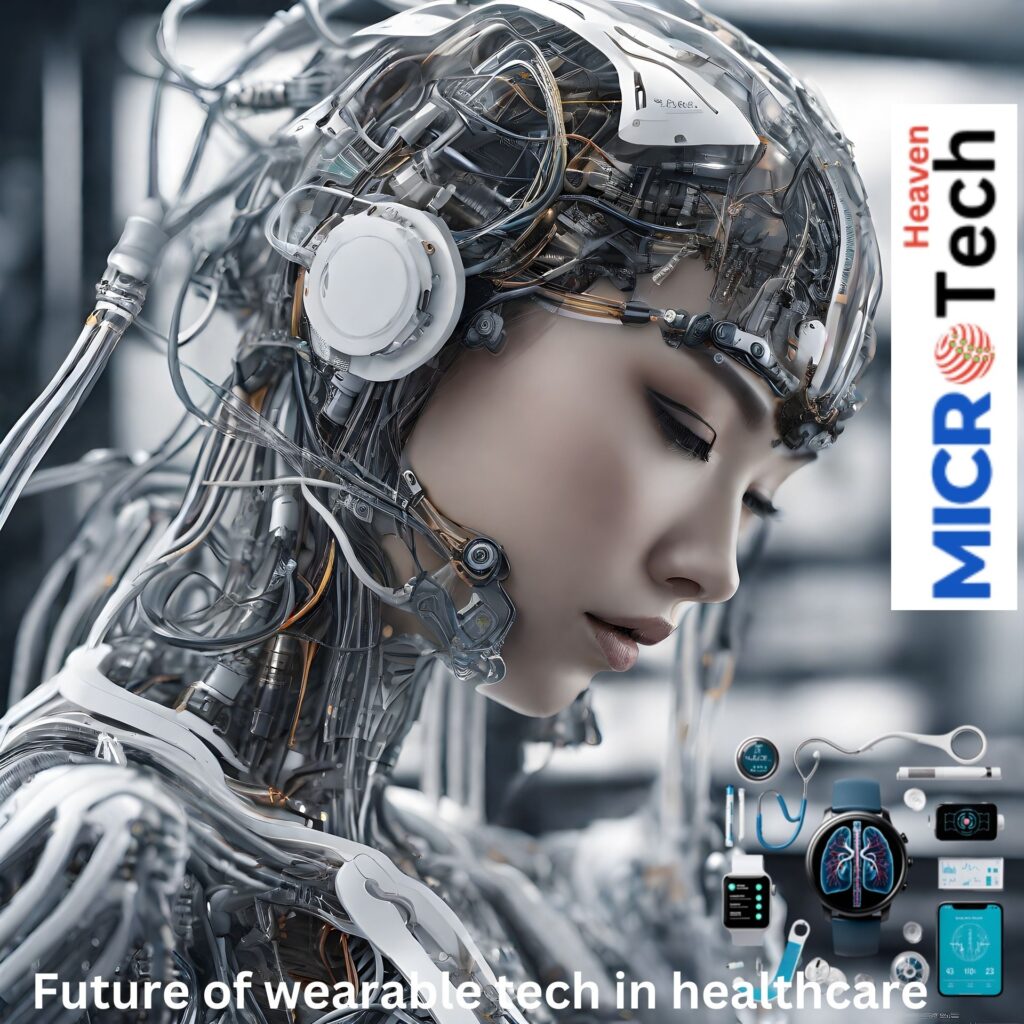Future of Wearable Tech in Healthcare
Table of Contents
- Introduction
- What is Wearable Technology?
- The Evolution of Wearable Technology in Healthcare
- Key Benefits of Wearable Technology in Healthcare
- Continuous Monitoring
- Empowering Patients
- Data-Driven Decisions
- Emerging Trends in Wearable Technology
- Predictive Wearables
- Smart Clothing
- Implants
- Challenges and Considerations
- Step-by-Step Guide to Choosing Wearable Tech
- Conclusion
- FAQs
Introduction
Wearable technology in healthcare is changing how we manage health and care for patients. Imagine a world where your smartwatch can track your heart rate or your clothes can alert you to health risks before they become serious. This isn’t just a futuristic idea—it’s happening now, and wearable tech is becoming a key part of modern healthcare. This article breaks down everything you need to know about wearable tech, from its benefits and trends to how you can choose the right device for your needs.
What is Wearable Technology?
Wearable technology includes devices like smartwatches, fitness trackers, and even clothing equipped with sensors. These devices collect data about your body, such as your activity levels, heart rate, or sleep patterns, and share it with you or your healthcare provider. This real-time information helps you stay informed about your health and allows doctors to make better decisions about your care.
The Evolution of Wearable Technology in Healthcare
Wearable tech started with simple devices like step counters. Over time, these gadgets have become powerful health tools. Today, wearables can monitor heart rates, detect irregular heartbeats, and even track glucose levels for people with diabetes.
Example:
Take Sarah, a busy mom. She used a smartwatch to monitor her stress levels and found that certain times of the day made her anxiety spike. By making small changes to her routine, she was able to feel more in control of her mental health.

Key Benefits of Wearable Technology in Healthcare
1. Continuous Monitoring
Wearable devices can keep an eye on your vital signs 24/7. This means potential health problems can be spotted early, allowing for quicker action.
2. Empowering Patients
These gadgets put health information in your hands. You can set goals, track your progress, and take steps to manage conditions like high blood pressure or diabetes.
3. Data-Driven Decisions
The data collected by wearables can help doctors create better treatment plans. For example, if your device shows irregular heart activity, your doctor can use that information to adjust your care.

Emerging Trends in Wearable Technology
1. Predictive Wearables
These devices don’t just track your health—they predict issues before they happen. For example, they could warn you of a possible heart attack by analyzing patterns in your body’s data.
2. Smart Clothing
Clothing with built-in sensors is on the rise. Imagine wearing a shirt that tracks your heart health or socks that monitor foot conditions for people with diabetes.
3. Implants
Wearable tech is also going under the skin. Implants can continuously monitor your health without needing external devices. Some are even being developed to help with neurological conditions by interacting directly with the brain.

Challenges and Considerations
- Data Accuracy: Devices need to provide reliable data for effective care.
- Privacy Concerns: Protecting sensitive health data is critical.
- Regulations: Medical devices must meet strict standards to ensure safety and effectiveness.
Step-by-Step Guide to Choosing Wearable Tech
- Identify Your Needs: Decide what you want to monitor, like heart rate or sleep patterns.
- Research Options: Look into devices that meet your needs and read reviews.
- Check Compatibility: Ensure the device works with your phone or other gadgets.
- Consider Features: Think about extras like GPS or water resistance.
- Evaluate Battery Life: Choose a device that fits your lifestyle.
- Review Warranty and Support: Make sure help is available if something goes wrong.
Conclusion
Wearable technology is transforming healthcare, making it easier to stay on top of your health and get the care you need. With advancements like predictive wearables, smart clothing, and implants, the future of health management looks brighter than ever.
By choosing the right device, you’re not just keeping up with technology—you’re investing in a healthier, more informed future.
FAQs
1. What types of wearable technology are available for healthcare?
Smartwatches, fitness trackers, smart clothing, and implants are common examples.
2. How does wearable technology improve patient care?
It provides real-time health data, helping with early detection and personalized treatment plans.
3. Are there privacy concerns with wearable technology?
Yes, it’s important to choose devices and platforms that prioritize data security.4. Can wearable technology prevent serious health issues?
Yes, predictive devices can alert you to potential problems, allowing you to take preventive measures.



